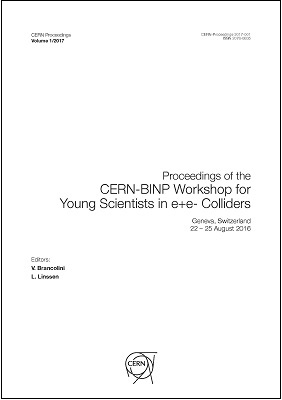Preliminary Design Study of a Pre-booster Damping Ring for the FCC e+e− Injector
DOI:
https://doi.org/10.23727/CERN-Proceedings-2017-001.19Keywords:
FCC, Damping ring, pre-booster ring.Abstract
The aim of the FCC e+e− lepton collider is to collide particles in the energy range 40–175 GeV. The FCC e+e− injector complex needs to produce and transport high-intensity e+e− beams at a fast repetition rate of about 0.1 Hz to top up the collider at its collision energy. A basic parameter set exists for all collider energies, assuming a 10 GeV linac operating with a large number of bunches accumulating in the existing SPS, which serves as pre-accelerator and damping ring before the bunches are transferred to the high-energy booster. The purpose of this study is to provide the conceptual design of an alternative damping and accelerator ring, replacing the SPS in the current scheme. This ring will have an injection energy of around 6 GeV and an extraction energy of around 20 GeV. Apart from establishing the basic ring parameters, the final study will include the optics design and layout, and single particle linear and non-linear dynamics optimization, including magnetic and alignment error tolerances. The study will also involve some basic estimation of collective effects, including intrabeam scattering, single and multibunch instabilities and impedances, two-stream effects (e-cloud and ion instabilities) and address the issue of synchrotron radiation handling. In this document, as part of these studies, basic ring parameters, first results of optical design after some analytical calculations, and layout studies are presented.
Downloads
Published
Issue
Section
License
Authors who publish with this journal agree to the following terms:- Authors retain copyright and grant the journal right of first publication with the work simultaneously licensed under a Creative Commons Attribution License CC-BY-4.0 (link to external page) that allows others to share the work with an acknowledgement of the work's authorship and initial publication in this journal.
- Authors are able to enter into separate, additional contractual arrangements for the non-exclusive distribution of the journal's published version of the work (e.g., post it to an institutional repository or publish it in a book), with an acknowledgement of its initial publication in this journal.
- Authors are permitted and encouraged to post their work online (e.g., in institutional repositories or on their website) prior to and during the submission process, as it can lead to productive exchanges, as well as earlier and greater citation of published work (See The Effect of Open Access).

